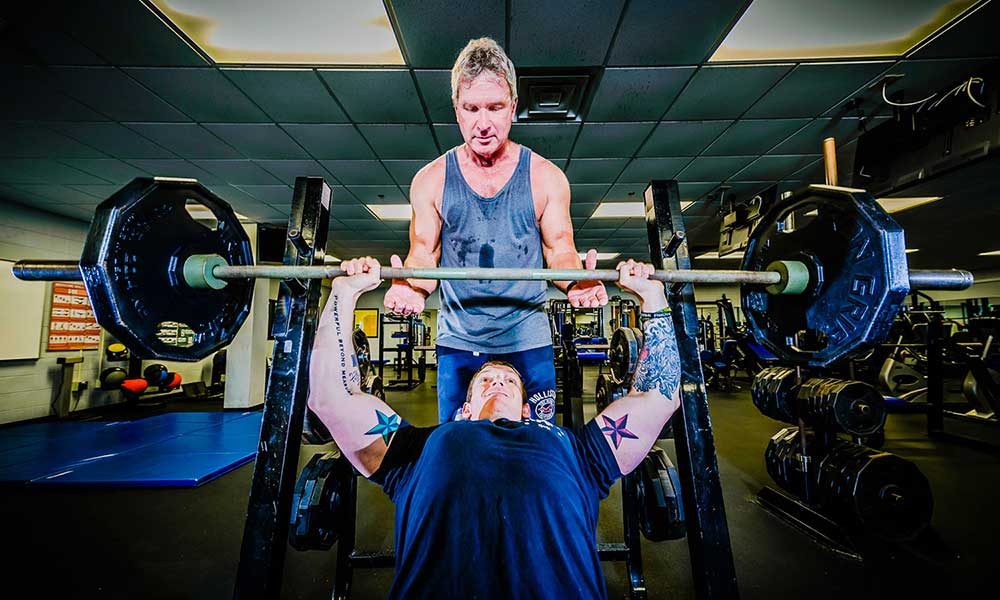People often avoid strength training because it requires a level of knowledge and skill that many may not be familiar with. If we need to increase our physically activity, it is often more comfortable to start with something we know, like walking. Even if you have exercise experience, there may be a technique for performing a strength exercise that you haven’t tried. Fitness faculty can provide strength training education.
Muscular Strength
The body uses skeletal muscles to move our bones, thus allowing us to perform physical activity. When we exert a large amount of effort against a resistance, we are utilizing our muscular strength. The force generated by our muscles moves us, allowing us to move a weight or other objects. The resistance we experience can come from a variety of places, like gravity (say when we are standing up out of a squat), or a weight training machine (like when we push/pull a bar connected to a pully system that moves a stack of weights), or a stretchy piece of exercise tubing (the more we pull on it, the more resistance we experience).
Why is muscular strength important?
Having physical strength gives us the ability to do many things. We move heavier objects without discomfort or injury. We help prevent muscular imbalances that can develop over time. Without a foundation of strength, daily activities would be difficult. We see this in aging populations, who struggle to do even simple life tasks like stepping up a set of stairs or standing up off the toilet.
Increasing strength can also increase the energy demands of the body, which means an increase in metabolism. Muscles require more energy than fat not only during movement but while at rest doing nothing (we call this our resting metabolic rate). Calories provide us with energy. Someone who gains muscle will burn more calories!
Those who are at risk for osteoporosis can benefit from strength training. Muscles adapt to the stresses placed upon them by getting stronger. The underlying structures also adapt meaning bones get stronger too! Strength training increases bone density.
We often think about muscular strength as someone who has large muscles, but this is not always the case. There are specific ways to train to increase strength and different techniques for increasing muscle bulk. Faculty in the fitness centers can provide instruction on these concepts as you design your workout plan.

Muscular Endurance
Muscular endurance is the body’s ability to exert force over an extended period of time. This force is not maximal or even near maximal as it is when we perform muscular strength exercises. Examples of muscular endurance exercises include movements like body weight squats, push-ups, or holding a plank. If many repetitions can be performed, it is considered a muscular endurance focused exercise.
We frequently see assessments that test muscular endurance with general population individuals because a test of muscular strength may not be appropriate. We would not take a deconditioned person off the street and have them perform a 1 repetition maximum squat or bench press to test their strength! However, doing body weight squats or holding a plank may be more appropriate.
How do I know if I am performing exercises for muscular strength or muscular endurance?
The biggest difference between training for muscular strength and training for muscular endurance is the number of repetitions you are able to perform of a specific exercise. For example, if we take a person who is new to strength training and have them perform a push-up exercise, they may only be able to achieve 3 or 4 repetitions with good form. At this point in time, the exercise would be considered to build muscular strength. As they practice and become stronger, they may be able to perform more repetitions. Once they near about 15 repetitions or so, we can say they have developed muscular endurance.
Many exercises can be adjusted to focus on muscular strength or muscular endurance. You may decide to switch between the two in your workout program. Fitness faculty can help you plan for this!